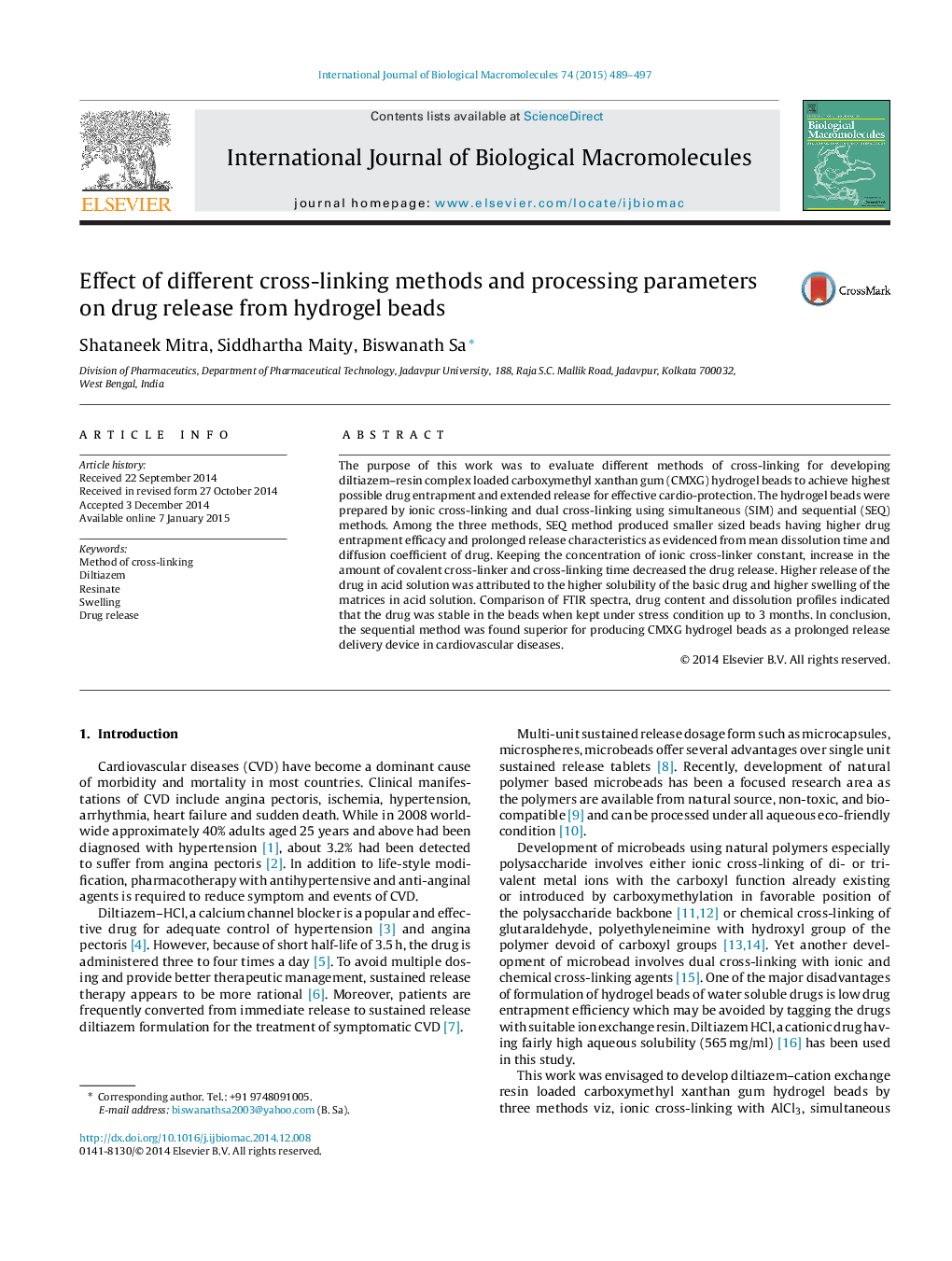| Article ID | Journal | Published Year | Pages | File Type |
|---|---|---|---|---|
| 8332196 | International Journal of Biological Macromolecules | 2015 | 9 Pages |
Abstract
The purpose of this work was to evaluate different methods of cross-linking for developing diltiazem-resin complex loaded carboxymethyl xanthan gum (CMXG) hydrogel beads to achieve highest possible drug entrapment and extended release for effective cardio-protection. The hydrogel beads were prepared by ionic cross-linking and dual cross-linking using simultaneous (SIM) and sequential (SEQ) methods. Among the three methods, SEQ method produced smaller sized beads having higher drug entrapment efficacy and prolonged release characteristics as evidenced from mean dissolution time and diffusion coefficient of drug. Keeping the concentration of ionic cross-linker constant, increase in the amount of covalent cross-linker and cross-linking time decreased the drug release. Higher release of the drug in acid solution was attributed to the higher solubility of the basic drug and higher swelling of the matrices in acid solution. Comparison of FTIR spectra, drug content and dissolution profiles indicated that the drug was stable in the beads when kept under stress condition up to 3 months. In conclusion, the sequential method was found superior for producing CMXG hydrogel beads as a prolonged release delivery device in cardiovascular diseases.
Keywords
Related Topics
Life Sciences
Biochemistry, Genetics and Molecular Biology
Biochemistry
Authors
Shataneek Mitra, Siddhartha Maity, Biswanath Sa,
